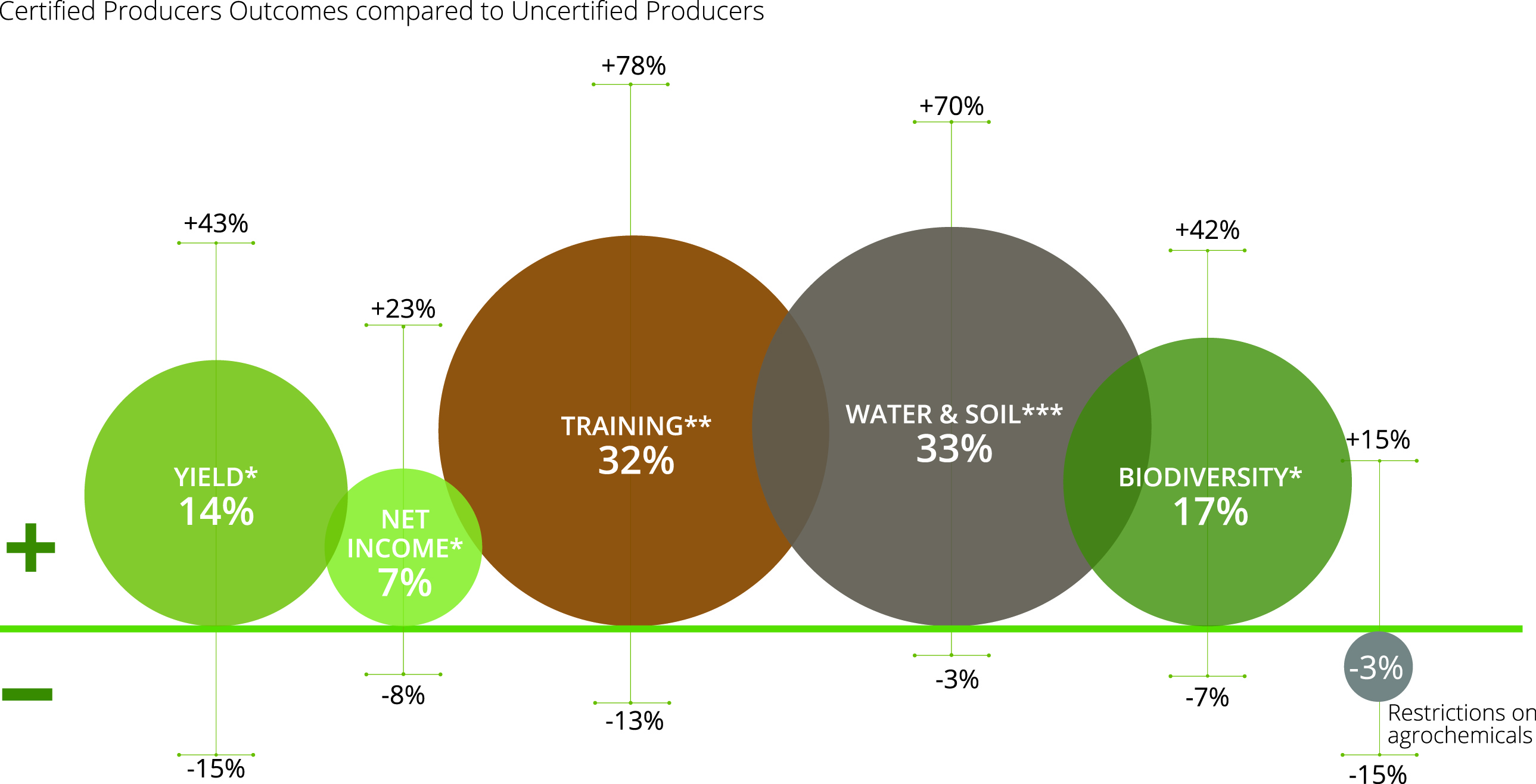Lessons from nearly 18,000 farm surveys conducted over 4 years in 12 countries.
March 10, 2014
Together with five UN agencies of the United Nations Forum on Sustainability Standards, leading NGO’s and global firms.
The timing is fitting as food companies increasingly join governments and developments agencies to invest in more sustainable practices in developing countries. Giants like Mars, Unilever, Starbucks, Nestle and McDonalds are among the firms investing in new approaches to help them understand what makes the farmers that supply them more or less sustainable.
Multi-billion dollar market segments now integrate no less than 435 sustainability standards or “eco-labels” claiming some aspect of sustainability. Some of these are a response to the failure of both public and corporate policies to deliver results in the most critical aspects of our food supplies. So, it is becoming increasingly important to know how effective they are and, indeed, how sustainable any sort of initiative – whether public or private – really is.
The COSA Measuring Sustainability Report is a result of our seven year collaboration with many organisations and experts to evolve a common set of practical indicators and metrics to improve the understanding and management of sustainability efforts.
Chapter 1
Executive Summary
There are many paths to achieving sustainability. To choose the best one it is necessary to measure results in a reliable and yet cost – effective manner. COSA, working together with many global partners, offers science – based insights and managerial tools to make the future of agriculture a more sustainable one.
Chapter 2
Sustainability and its Recent Evolution
The influential and explosive new trends in sustainability are laid out in stark contrast to the conditions of farm communities where little is improving. A significant factor is the relative absence of credible information and of evidence – based impact assessments to evaluate what is working and what is not.
However, we can now measure the sustainability of farmers, communities, and the environment in transparent and standardized ways.

Chapter 3
About COSA
The rationale for COSA explains the history, basic structure and unique approach to measuring sustainability. It includes an outline of the COSA System.
Chapter 4
COSA Methodology
COSA uses a coordinated and systematic approach to collect and analyze data recognizing that Performance Monitoring and the Impact pathways are vital stages for understanding sustainability and managing for results.

- COSA method begins with fostering a consistent set of indicators and measurement framework among many global users (including institutions and leading firms) to facilitate the overall learning about sustainability.
- COSA tools ensure appropriate framing of any assessment to ensure that the three dimensions are captured in order to provide an overall picture of sustainability and the inevitable choices and trade – offs that occur.
- Scientific process matters at every step such as the representative accuracy and reduced bias that start from the selection of farmers or organizations to the final analysis and reporting. COSA always integrates national partner institutions in its work to achieve both local relevance and a rich contextual understanding.
Chapter 5
COSA Findings
Arranged by Economic, Social, Environmental and Producer Group findings, this section of the report presents a sampling of the many ways that COSA information can be useful. It includes useful lessons and surprising findings gathered from Africa, Asia and Latin America.
- Sustainability Standards tend to be context specific: good in some areas and weak in others
- Higher yields can correlate with better environmental practices
- Multiple certifications correlate to more, not less, income, but only up to a point
- The overall tendency of certified producers is positive (see Figure below). But this average is neither guaranteed nor consistent and there are many cases of negative results as the range below suggests.
-

Chapter 6
Lessons Learned and Next Steps
A summary of likely next steps for COSA and some distilled key lessons for:
- Policymakers and Companies
Sustainability Standards play a unique role in a fast – changing agricultural landscape affected by diminishing resources, climate change, and population pressures. However, only a small part of the financial value that they generate actually reaches producers. - Producers and NGOs
It can be difficult to ascertain which approaches warrant the cost and effort of compliance. The promises that circulate of insatiable markets and high premiums are not certain and local institutional support is invaluable when undertaking sustainability approaches that entail change. - Standards Bodies
Many Voluntary Sustainability Standards are investing in balanced measurement to improve their impacts and efficiencies and to better understand their own effectiveness. Using a core set of common sustainability indicators, as ISEAL and others are recommending, can advance transparency will be useful for the process of improvement.






